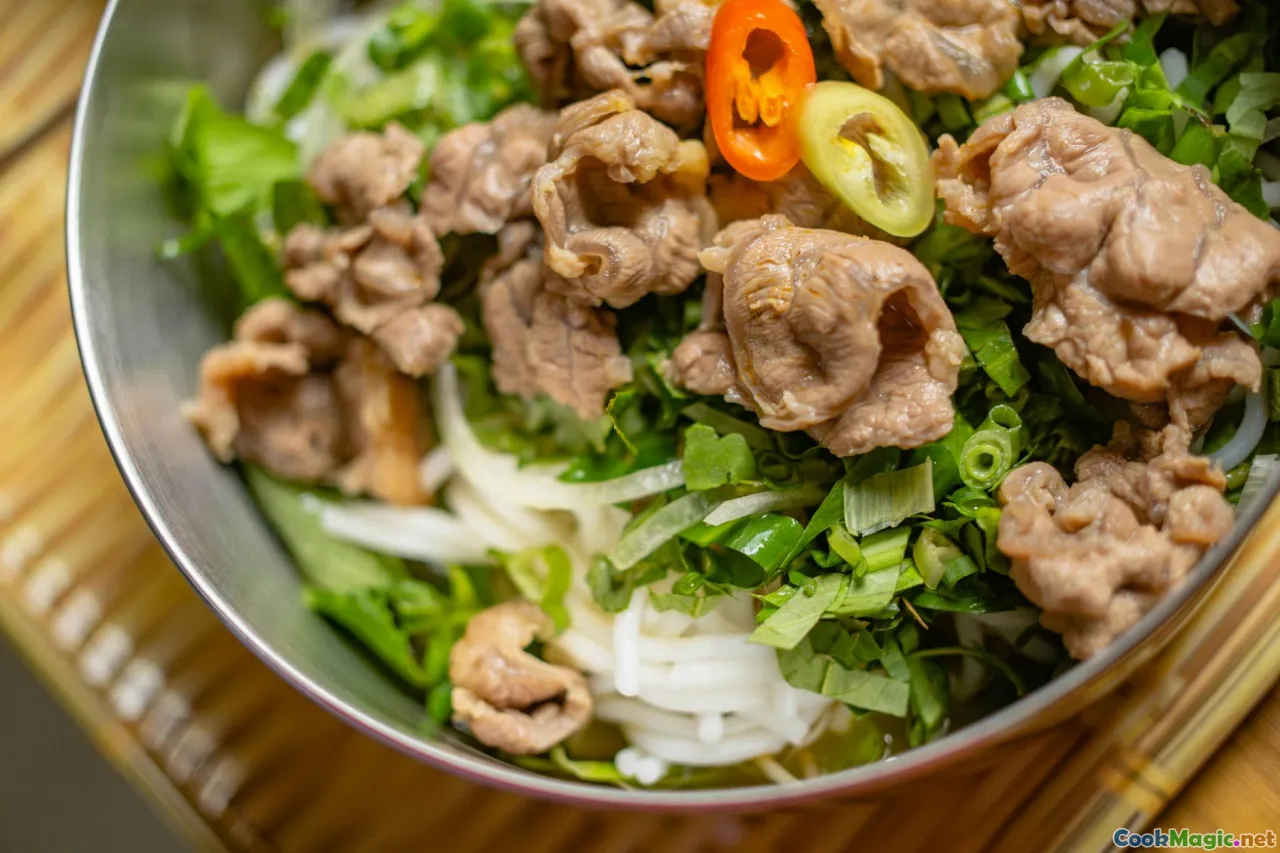The Importance of Fresh Ingredients in Vietnamese Recipes
8 min read Discover how fresh ingredients elevate Vietnamese dishes, enriching their flavors, textures, and cultural significance in this immersive culinary journey. April 19, 2025 12:00
The Importance of Fresh Ingredients in Vietnamese Recipes
Imagine walking through a bustling street market in Hanoi at dawn. The air is thick with the fragrant aroma of lemongrass, the sharp tang of lime, and the sweet, earthy scent of fresh herbs. Vendors display their vibrant array of produce—crisp lettuce, plump tomatoes, fragrant basil, and shimmering fish caught just hours before. Here, in the heart of Vietnam, the essence of authentic cooking begins with one simple principle: the use of fresh ingredients.
A Cultural and Historical Perspective
Vietnamese cuisine is a symphony of flavors, textures, and colors — a reflection of the country's rich history and diverse landscapes. From the lush Mekong Delta's riverine bounty to the mountainous highlands, ingredients are sourced locally and consumed within hours of harvest or catch. This deep-rooted tradition emphasizes seasonality and local sourcing, which ensures that every dish is a celebration of freshness.
Historically, Vietnamese cooks and home chefs have relied on the immediacy of fresh ingredients to preserve the integrity of their recipes. Before refrigeration became widespread, communities depended on daily markets and quick preparation to enjoy vibrant, healthful meals. This legacy persists today, influencing modern culinary practices and the overall philosophy that fresh is best.
The Sensory Power of Freshness
Visual Appeal
Imagine a bowl of pho, Vietnam's iconic noodle soup. The pristine slices of rare beef glisten with the warmth of the broth, while the bright green of fresh basil and cilantro adds a lively contrast. The vibrant colors of freshly sliced vegetables in agỏi cuốn (spring roll) make it not just a dish but a feast for the eyes.
Aromas
The intoxicating smell of fresh herbs—mint, Thai basil, perilla—wafts through the air, inviting and invigorating. These herbs are not just garnishes but vital flavor components that define the sensory profile of Vietnamese dishes.
Textures
Fresh ingredients lend a lively crunch to salads like gỏi đu đủ (green papaya salad) or a crisp bite to lettuce wraps. The tenderness of freshly caught fish or chicken, prepared just moments after slaughter, melts in your mouth, providing a depth of flavor that processed or preserved ingredients can't match.
Flavors
The essence of freshness amplifies umami, brightness, and natural sweetness. Lime juice, freshly squeezed, imparts a sharp, clean acidity that balances savory notes. Fresh chili peppers add a fiery kick that energizes the palate.
The Role of Fresh Ingredients in Signature Dishes
Pho
In Vietnam, pho is more than a noodle soup; it's a cultural icon. The secret to its layered, complex flavor lies in the broth, which is simmered for hours using fresh bones, herbs, and spices. The beef or chicken used must be fresh to maintain tenderness and flavor. The herbs—basil, cilantro, mint—must be freshly plucked, releasing their aromatic oils upon contact with hot broth.
Gỏi Cuốn (Spring Rolls)
These delicate rolls showcase the texture and flavor of fresh shrimp, herbs, and vegetables. The wrapper, made from rice paper, is soaked briefly in water to maintain its elasticity and then filled with ingredients that are still vibrant and crisp.
Bánh Mì
The iconic Vietnamese sandwich relies heavily on freshly baked baguette, crisp vegetables, and freshly sliced meats or pâté. The crunch of freshly pickled vegetables and the aroma of freshly baked bread are essential to its appeal.
Canh Chua (Sour Soup)
This tangy soup features fresh fish, tamarind, and a medley of vegetables and herbs. The freshness of the fish ensures a light, clean flavor, while the herbs add complexity.
Sourcing and Selecting Fresh Ingredients
Markets and Vendors
Vietnamese markets are treasure troves of fresh produce, aromatic herbs, and live seafood. The key to authentic flavor is selecting ingredients at their peak—firm, brightly colored, fragrant, and free from blemishes.
Seasonal Considerations
Vietnam's climate allows for a wide variety of seasonal ingredients. Embracing seasonality ensures optimal freshness and flavor. For example, in summer, you might find abundant fresh mangoes and herbs, while winter features hearty greens and root vegetables.
Tips for Home Cooks
- Visit local markets regularly to experience the vibrant hustle and select ingredients that smell and look fresh.
- Use herbs and greens promptly to preserve their aroma and texture.
- Buy seafood from trusted vendors who keep their catch alive or well-maintained.
- Trust your senses: freshness is often signaled by bright colors, firm textures, and fragrant aromas.
Personal Reflections and Experiences
Having traveled across Vietnam, I’ve learned that the secret ingredient in every dish is not a spice or sauce but the freshness of its components. I vividly remember a dinner in Hoi An where a simple bún thịt nướng (grilled pork with noodles) was transformed by just-picked herbs and freshly grilled pork. The flavors burst, and I realized that no amount of seasoning could replicate the brightness of truly fresh ingredients.
In my own kitchen, I strive to emulate this ethos. I make weekly visits to local markets, hand-selecting produce, and experimenting with seasonal ingredients. The joy of tasting a dish that sings with freshness is unparalleled, connecting me to Vietnam's culinary soul.
Final Thoughts: Celebrating Freshness
In Vietnamese cuisine, freshness is not an optional ingredient; it is the foundation of authenticity and flavor. From the bustling markets to home kitchens, the commitment to using fresh ingredients elevates simple recipes into memorable culinary experiences. This principle preserves the healthful, vibrant qualities of Vietnamese dishes and honors centuries of tradition.
So, next time you prepare a Vietnamese meal, remember that the true magic lies in the freshness of your ingredients. It’s a celebration of life, nature, and the timeless art of cooking.
Embrace the freshness, and let your dishes tell stories of Vietnam’s rich heritage—a place where every ingredient is a piece of history and a promise of flavor.









